New Method of Strength Measurement of Stroke at Ball in Tennis
Фотографии:
ˑ:
Piotr Żurek1, Mateusz Rynkiewicz2, Włodzimierz Starosta3, Zdzisław Kołaczkowski1, Ewa Ziemann4 , Tadeusz Rynkiewicz1
1 Eugeniusz Piasecki University School of Physical Education, Poznań, Extramural Faculty of Physical Culture, Gorzów Wlkp., POLAND.
2 PW Znak-Test Mateusz Rynkiewicz-www.znaktest.pl, Bogdaniec, POLAND.
3 International Association of Sport Kinetics. High School of Physical Education and Tourism, Białystok, POLAND.
4 University School of Physical Education and Sport, Department of Physiology, Gdańsk, POLAND.
Key words: dynamic strength, tennis, sport level, tennis serve, juniors.
INTRODUCTION. Tennis is a game with an acyclic movement structure, which requires both condition and coordination of motor abilities during time-variable actions [König et al., 2001; Cardoso-Marques, 2005; Girard et al. 2006]. The mean duration of game actions, which are predominated by anaerobic processes, is relative to the player’s gender – amounting to M±SD = 7.1±2.0 s and M±SD = 5.2±1.8 s in men and women, respectively. Moreover, it is determined by the type of court on which the sport is played – hard court: M±SD = 6.0±2.0 s; clay court: M±SD = 7.7±1.7 s; grass court: M±SD = 4.3±1.6 s [Elliott et al., 1985; Richers, 1997; O’Donoghue, Ingram, 2001; Reid, Schenker, 2008]. The dynamic strength level is considered amongst motor abilities that determine the sports level of a tennis player [Bergeron et al., 1991; Schönborn, 2006; Kovacs, 2007] (Fig. 1). Most previous studies regarding tennis players pertained to the determination of the energetic potential and the analysis of biochemical parameters [Reilly et al., 1994; Christmass et al., 1998; Ferrauti et al., 2001; Perry et al., 2004; Smekal, 2005; Elliott, 2007, Hornery et al., 2007; Kovacs, 2007; Psalman, 2008; Karnia et al., 2010; Żurek et al., 2010]. In contrast, research dealing with the mechanical characteristics of the technical actions performed during a game is sparse. One can only find information on the speed measurements of racket movement and kinetic parameters during service shot in currently available literature [Bahamonde, 2000; Elliott, 2000; Gordon, Dapena, 2006; Chow et al., 2009].
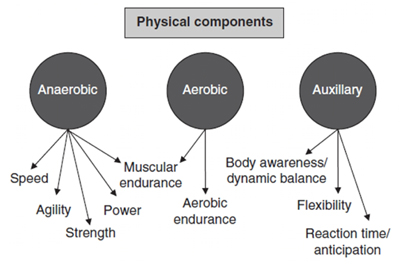
Fig. 1. Determinants of sports level in tennis [Kovacs, 2007]
The serve is considered to be one of the most crucial shots determining the course of a tennis competition [Elliott, 2001; O’Donoghue, Ingram, 2001; Pugh et. al. 2003; Johnson, McHugh, 2006; de Subijana, Navarro, 2010]. An effective serve, which is difficult to return by the competitor, requires dynamic strength while hitting the ball. Muscular strength is one of the basic condition motor abilities. Its characteristics are determined on the basis of the sum of individual muscle strengths, and can alternatively be measured indirectly based on the highest value of the external resistance overcome during the performance of a motor task [Rynkiewicz, 2003].
In view of the importance of the serve and of our initial assumption on the significant role of strength in performing this shot, this study was undertaken in order to verify the utility of a new method of measuring the dynamic strength developed during a serve.
We hypothesized that the level of strength developed during this shot is associated with the sports level of the player, which in turn is indirectly expressed by said player’s current rank in Polish Tennis Association classification.
METHODS
The examined group comprised of tennis players who are members of the Polish national junior team (n=16), with an average age of 16.2±1.1 years, 69.1±8.8 kg of body mass, and 179.5±4.7 cm body height. Most athletes represented master class or the first class of sports’ level. The study was conducted during cyclic training consultations held in the main training center of the Polish Tennis Association (Tab. 1).
Tab. Biometric characteristics of studied tennis players (n=14)
|
No. |
Parameter |
[M±SD] |
Min. |
Max. |
|
1. |
Age [years] |
16.2±1.1 |
15 |
18 |
|
2. |
Body weight [kg] |
69.1±8.8 |
53 |
81 |
|
3. |
Body height [cm] |
179.5±4.7 |
170 |
186 |
|
4. |
BMI [kg/m2] |
20.9±1.9 |
17 |
23.4 |
|
5. |
FM [%] |
8.5±0.8 |
4 |
11.8 |
|
6. |
FFM [kg] |
35.3±2.1 |
28.1 |
42.1 |
|
7. |
Training experience [years] |
9.4±1.3 |
7 |
12 |
The dynamic strength developed during the serve was recorded by tensometric sensors placed on the tennis racket. The measurement overlay was fixed to the racket with two buckles, and its signaling cord was stabilized with an aid of self-adhesive tape. Placing the sensors on the racket did not disrupt the technique of tennis shots (Fig. 2).
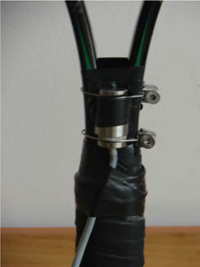
Fig. 2. Tensometric sensors placed on the tennis racket
The recorder, placed onto athlete’s hip was equipped with a 32MB flash memory card and two differential channels for tensometric converters. The recorder was supplied by three AAA type (3.6V) accumulators (Fig. 3). The device was enclosed in a plastic case with two measurement converter ports, two Hirshman M8M4p ports, a DC-4 mm accumulator charging port, and a mini USB port to communicate with the computer.
The recorder was working in a “memory” mode with the measurements being recorded onto the memory card. Maintenance and control of the device, programming of measurement session parameters, transmission of results to the computer, and standard presentation and management of data were executed using Windows XP operating system. Additionally, the device could work in an “on line” mode with a direct transmission of results to the computer [Nosarzewski et. al., 2009; Staniak, 2009].
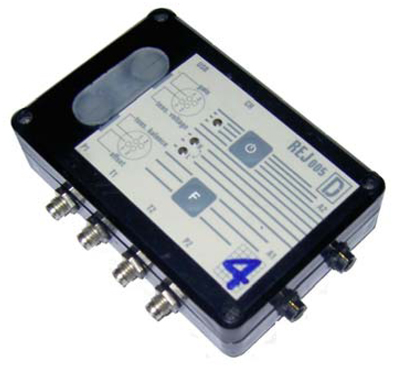
Fig. 3. Recorder of serve strength
A standard tennis warm-up was conducted prior to measurements. The average strength developed during a series of 10 serves performed into each service box was analyzed in every athlete equipped with a set for strength measurements (Fig. 4). The results were subjected to a statistical analysis using Statistica 8 (Statsoft, Inc. USA) package. The arithmetic means and their standard deviations were calculated along with the statistical significance of differences. The Mann-Whitney U test or Student t-test were used to determine this latter parameter depending on the distribution of the analyzed variables.
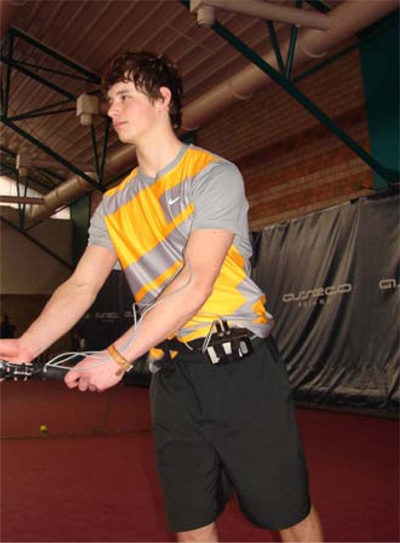
Fig. 4. Tennis player equipped with a device of serve strength measurement
RESULTS
The mean value of dynamic strength developed during the serve into the left box amounted to M±SD=32.0±.0.6 N, with individual measurements ranging between 21.0 N and 41.0 N. The value of the dynamic strength of the serve into the right box was M±SD= 29.0±0.7 N on average, with individual variability between 20.0 N and 44 N. Most athletes were characterized by higher strength of the serve placed into the left service box. However, no significant differences of strength were documented between serves directed into opposite service boxes (Fig. 5).
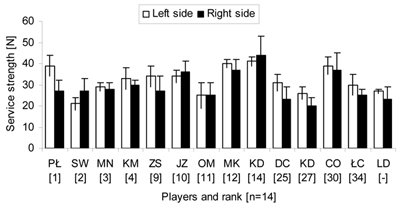
Fig. 5. Values of serve strength stratified by athletes’ rank (n=14)
No significant association was observed between the measurements of the dynamic strength determined during the serve series and the sports level of our participants determined by their rank in the Polish Tennis Association classification. Moreover, there was no significant association between the level of dynamic strength determined during serve and the body weight or body height of the participants.
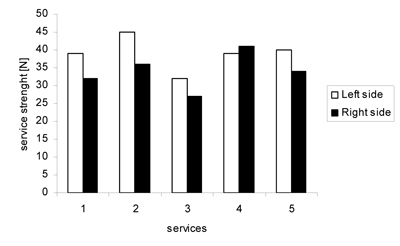
Fig. 6. Dynamic strength of consecutive services performed by player ranked no. 1
The athlete ranked no. 1 in Poland developed one of the highest values of serving strength when serving into the left service box. In contrast, his results while serving into the right box aligned with the mean level of the entire group. The analysis of consecutive shots performed by this player confirmed the greater values of the dynamic strength of most serves directed into the left service box (Figs. 5, 6).
DISCUSSION
The serve represents a vital tennis shot, and mastering it at a high level is a prerequisite of achieving outstanding results in this discipline. This is particularly true in male tennis competitions during which the speed of the served ball (frequently exceeding 200 km/h) is significantly greater than that achieved in women’s tennis. It is assumed that those differences reflect the variability of the players’ body height, greater values of shot’s strength, and more flat shots that are characterized by a decreased rotation [O’Donoghue, Ingram, 2001]. Women serve with less strength, and therefore their service speed is several km/h slower than of men. Additionally, women serve with higher precision, giving the ball a greater lateral rotation, slicing the shot, and a so-called kick service, with the ball having a high rebound. Finally, the service shot performed by female players is characterized by variable direction and height, which constitute additional elements surprising the competitor [Fernandez-Fernandez et al., 2008].
Serve is the only tennis shot that cannot be influenced by the competitor. The player hits the ball in a stable position, and at a freely selected moment. Therefore, prior to the shot, the serving athlete is in a comfortable and stable situation [Bahamonde, 2000]. The service is considered effective when it brings direct points for so-called service aces and forced return errors, or indirect points, when the service disables a counterattack from the return, or enables an attack and point win by playing a volley or smash. The effectiveness of the serve, in other words its difficulty for the competitor, is determined by a high level of motor coordination [Starosta, 2003, the speed of the shot during its terminal phase, and ability to maintain balance and a level of dynamic strength [Królak, 1999; Schönborn, 2006; Gordon, Dapena, 2006].
Most players in our group were characterized by greater values of strength when serving into the left service box. This was specific of right-handed athletes who constituted marked majority of the examined group. Plausibly, this is determined by varying angle of the shot typical for right- and left-handed tennis players. Observations suggest that left-handed players who serve into the right service box are more predisposed to direct the ball outside the court. This situation is particularly favorable during games with right-handed competitors when the ball is directed onto the backhand – a shot usually less effective in most athletes. In this study, no significant differences of strength were documented between serves directed into opposite service boxes; however, we observed a marked variability of individual results. It should be noted that although the ranking is a complex derivative of the sports level and activity of an athlete, it does not necessarily correspond to his/her actual disposition.
The athlete ranked no. 1 in Poland developed one of the highest values of serving strength when serving into the left service box. However, the same player achieved lower values of strength on the serve directed into the right service box (on the advantage side), which aligned with the mean level of the rest of the group. Based on those findings, one cannot unequivocally conclude an association between the dynamic strength and the sports level expressed by the Polish Tennis Association’s rank. Similarly, one cannot conclude on the significant association between the dynamic strength and the sports level of tennis players in the youth and junior age categories, contrary to the data provided by the studies of adult players [Schönborn, 2006; Kovacs, 2007]. Other authors also did not reveal a direct relationship between the level of peak oxygen uptake and current sports level [Crespo, Miley, 1998; Kovacs, 2007; Karnia et al., 2010]. Perhaps, in the case of the examined group of young tennis players, their sport level and current ranking position could be influenced by the level of motor coordination, the shot technique, as well as the orientation of their training towards the improvement of their speed and agility (movement coordination). Some players compensate their weaker serve with a higher quality of baseline forehand and backhand shots or volley net shots, where such factors as the variability of rotation, the direction, and the timing of the shot play important roles, along with the height of stricken ball [Juzwiak et al., 2008]. However, the results of this study remain to be verified by the measurement of the dynamic strength in a wider group of athletes, varying in terms of gender, age, training experience, and sports level.
CONCLUSSION
1. The proposed tensometric method allows to determine the value of the strength and its changes in function of the time of a serve. The device does not disturb the shot’s technique.
2. Tennis is a sport characterized by a complex technique, and the sport result is influenced by an array of factors. The ability of serving is important, but not vital. Therefore, using this method to determine the level of dynamic strength developed during other shots, e.g. forehand and backhand, is advisable.
3. Examined tennis players were characterized by marked levels of asymmetry of developed strength. The proposed method of measurement allows for the determination of the asymmetry of shots, and this information can contribute to a higher effectiveness of performed movements.
4. Furthermore, the applied measurement technique enables the registration of the racket acceleration observed during shots. The analysis of racket’s acceleration values in parallel and perpendicular planes of the shot could be an interesting topic for further research.
5. No significant correlation was observed between the dynamic strength developed during the serve and the sports level expressed by the ranking position in Polish tennis players in the youth and junior age categories. However, significant individual variability of the developed strength was documented.
6. The results of this study remain to be verified by the measurement of dynamic strength in a larger group of athletes, varying in terms of gender, age, training experience, and sports level.
References
- Bahamonde R. (2000). “Changes in angular momentum during the tennis serve”. Journal of Sports Sciences, 18, P.579-591.
- Bergeron M.F., Maresh C.M., Kraemer W.J., Abraham A., Conroy B., Gabaree C. Tennis (1991). “A physiological profile during match play”. Int. J Sports Med., P.12:474-9.
- Cardoso Marques M.A. (2005). “Strength training in adult elite tennis players”, Strength and Conditioning Journal, 27, 5, P.34-41.
- Chow J., Park S.A., Tillman M.D. (2009). “Lower trunk kinematics and muscle activity during different types of tennis serves”, Sports Medicine, Arthroscopy, Rehabilitation, Therapy & Technology, 1:24, P.1-14.
- Christmass MA, Richmond SE, Cable NT, et al. (1998). “Exercise intensity and metabolic response in singles tennis”. J Sports Sci.; 16: P.739-47.
- Crespo M, Miley D. (1998). “International Tennis Federation Advanced Coaches Manuals”. London: International Tennis Federation.
- Elliott B. (2000). “Hitting and kicking”. In V. Zatsiorsky (Ed.) Biomechanics in sport, Oxford: Blackwell Science, P.487-504.
- Elliott B. (2001) “Biomechanics of the serve”, (ITF) International Tennis Federation, 24, P.3-5.
- Elliott B. (2007). “Biomechanics and tennis”, Br J Sports Med., 40, P.392-396.
- Elliott B, Dawson B, Pyke F. (1985). “The energetics of singles tennis. J neuromuscular fatigue after prolonged cycling exercise”. Med. Hum Move Stud.; 11 (1), P.11-20.
- Fernandez-Fernandez J., Sanz-Rivas D., Fernandez-Garcia B., Mendez-Villanueva A., (2008). “Match activity and physiological load during a clay-court tennis tournament in elite female players”, Journal of Sports Sciences, 26(14), P.1589–1595.
- Ferrauti A, Bergeron MF, Pluim BM, et al. (2001). “Physiological responses in tennis and running with similar oxygen uptake”. Eur. J Appl Physiol.; 85. P.27-33.
- Girard O., Lattier G., Micallef J.P., Millet G.P. (2006). “Changes in exercise characteristics, maximal voluntary contraction, and explosive strength during prolonged tennis playing”, Br J Sports Med., 40. P.521-526.
- Gordon B.J., Dapena J. (2006). “Contributions of joint rotations to raquet speed in the tennis serve”, Journal od Sport Sciences, 24(1). P.31-49.
- Hornery D.J., Farrow D., Mujika I., Young W., (2007). “Fatigue in Tennis - Mechanisms of Fatigue and Effect on Performance”. Sports Med.; 37 (3). P.199-212.
- Johnson CD, McHugh MP. (2006). “Performance demands of professional male tennis players”, Br J Sports Med., 40. P.696–699.
- Juzwiak C.R., Amancio O.M.S. 1, Vitalle M.S.S., Pinheiro M.M., Szejnfeld V., (2008). “Body composition and nutritional profile of male adolescent tennis players”, Journal of Sports Sciences, 26(11). P.1209–1217.
- Kovacs M. (2007). “Tennis Physiology, Training the Competitive Athlete”. Sports Med.; 37 (3). P.189-198.
- Królak A. (1999). “Tenis dla, nauczycieli i rodziców”, Wydawnictwa Szkolne i Pedagogiczne, Warszawa, P.112-116. (In Polish).
- König D., Huonker M., Schmid A. (2001). “Cardiovascular, metabolic and hormonal parameters in professional tennis players”. Med. Sci. Sports Exerc. P.654-658.
- Karnia M., Garsztka T., Rynkiewicz M., Rynkiewicz T., Żurek P., Łuszczyk M., Śledziewska E., Ziemann E. (2010). “Physical Performance, Body Composition and Body Balance in Relation to National Ranking Positions in Young Polish Tennis Players”, Baltic Journal of Health and Physical Activity, Volume 2, No 2, P.113-123.
- Nosarzewski Z., Staniak Z., Karpiłowski B. (2009). „Technika wiosłowania kanadyjkarzy-ocena przydatności diagnostycznej trójosiowych pomiarów przyspieszenia łodzi”, Kierunki doskonalenia treningu i walki sportowej, red.: Kuder A., Perkowski K., Śledziewski D., 6, Polskie Towarzystwo Naukowe Kultury Fizycznej, P.485-489. (In Polish).
- O’Donoghue P, Ingram B. (2001). “A notational analysis of elite tennis strategy”. J Sports Sci., 19. P.107-115.
- Perry A.C., Wang X., Feldmann B.B. (2004). “Can laboratory –based tennis profiles predict field tests of tennis performance?” Journal Strength Cond. Res. 18; P.136-143.
- Psalman V. (2008). “Dynamic balance and its diagnostics by using 3D biomechanical analysis”. Facta Universitatis: Series Physical Education & Sport, 6 2. P.105-109.
- Pugh SF, Kovaleski JE, Heitman RJ, Gilley WF. (2003). “Upper and lower body strength in relation to ball speed during a serve by male collegiate tennis players”. Percept Mot Skill, 97. P.867-872.
- Reid M., Schneider K. (2008). “Strength and conditioning in tennis: Current research and practice”. Journal of Science and Medicine in Sport, 11, P.248-256.
- Reilly T, Hughes M, Lees A. (1994). “Such information will provide athletes, coaches and Science and racket sports”. 1st ed. London: E&FN Spon, P.10-13.
- Richers T.A. (1997). “Time-motion analysis of the energy systems in elite and competitive singles tennis”. J Hum Move Stud.; 28. P.73-86.
- Rynkiewicz T. (2003). “Struktura zdolności motorycznych oraz jej globalne i lokalne przejawy : rozprawa habilitacyjna”, AWF Poznań, seria: Monografie, nr 354, P.28-52. (In Polish).
- Schönborn R. (2006). “Optimales tennistraining-Der Weg zum Erfolgreichen Tennis vom Anfanger bis zur Weltspitze”, Spitta Verlag, ISBN 3-938509-11-2, P.169-179.
- Staniak Z. (2009). „Zestaw pomiarowy charakterystyki wiosłowania na kajaku
- i kanadyjce, instrukcja obsługi”, JBA, Zb. Staniak, Warszawa, P.1-10. (In Polish).
- Starosta W. (2003). “Motoryczne zdolności koordynacyjne (znaczenie, struktura, uwarunkowania, kształtowanie)”. Międzynarodowe Stowarzyszenie Motoryki Sportowej. Instytut Sportu w Warszawie.
- Subijana de C., Navarro E. (2010). „Kinetics energy transfer during the tennis serve”, Biology of sport, vol. 27, P.3-11.
- Żurek P., Rynkiewicz T., Rynkiewicz M. (2010). „Poziom wydolności młodych tenisistów na tle zawodników uprawiających inne dyscypliny sportowe”. W: Proces doskonalenia treningu i walki sportowej. T. 7. Red. Anna Kuder, Krzysztof Perkowski, Dariusz Śledziewski. Warszawa: Polskie Towarzystwo Naukowe Kultury Fizycznej, P.126-133 (In Polish).




 Журнал "THEORY AND PRACTICE
Журнал "THEORY AND PRACTICE